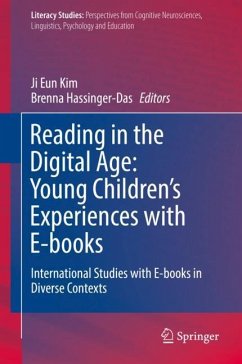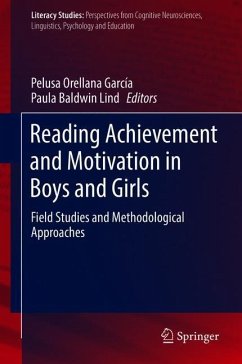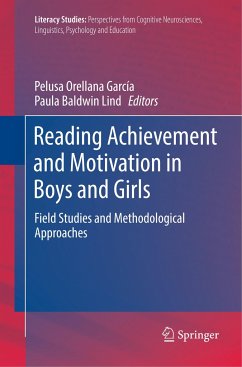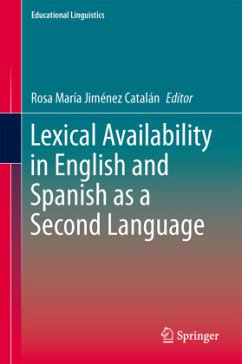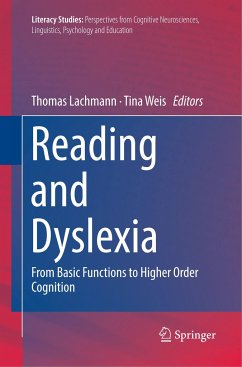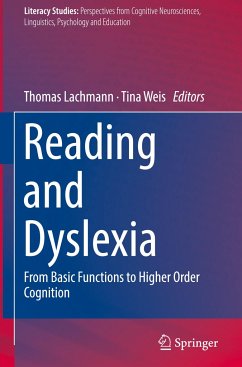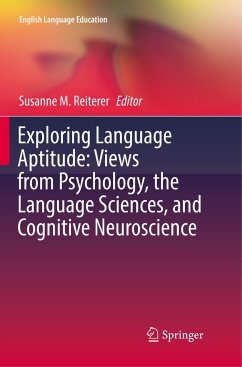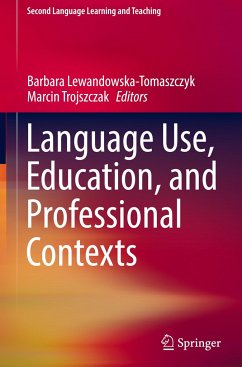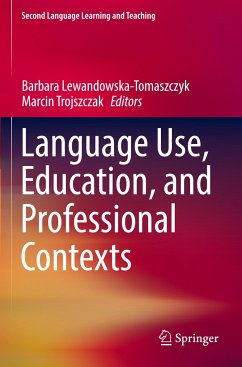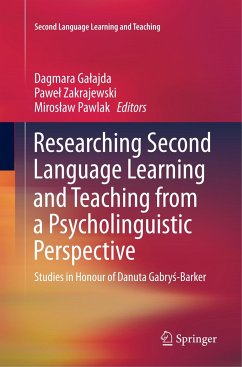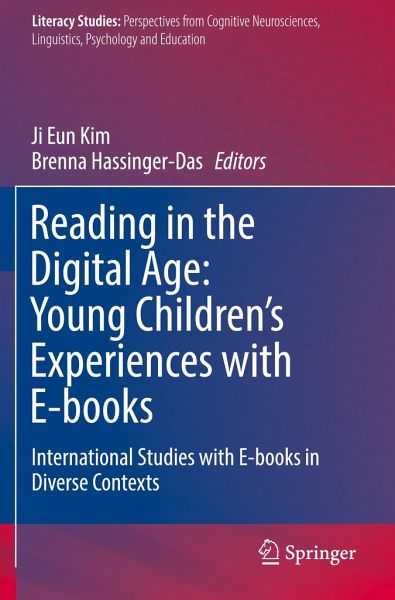
Reading in the Digital Age: Young Children's Experiences with E-books
International Studies with E-books in Diverse Contexts
Herausgegeben: Kim, Ji Eun; Hassinger-Das, Brenna
Versandkostenfrei!
Versandfertig in 6-10 Tagen
106,99 €
inkl. MwSt.

PAYBACK Punkte
53 °P sammeln!
This edited book focuses on affordances and limitations of e-books for early language and literacy, features and design of e-books for early language and literacy, print versus e-books in early language and literacy development, and uses of and guidelines for how to use e-books in school and home literacy practices. Uniquely, this book includes critical reviews of diverse aspects of e-books (e.g., features) and e-book uses (e.g., independent reading) for early literacy as well as multiple examinations of e-books in home and school contexts using a variety of research methods and/or theoretical...
This edited book focuses on affordances and limitations of e-books for early language and literacy, features and design of e-books for early language and literacy, print versus e-books in early language and literacy development, and uses of and guidelines for how to use e-books in school and home literacy practices. Uniquely, this book includes critical reviews of diverse aspects of e-books (e.g., features) and e-book uses (e.g., independent reading) for early literacy as well as multiple examinations of e-books in home and school contexts using a variety of research methods and/or theoretical frames. The studies of children's engagement with diverse types of e-books in different social contexts provide readers with a contemporary and comprehensive understanding of this topic.
Research has demonstrated that ever-increasing numbers of children use digital devices as part of their daily routine. Yet, despite children's frequent use of e-books from an early age, there isa limited understanding regarding how those e-books are actually being used at home and school. As more e-books become available, it is important to examine the educational benefits and limitations of different types of e-books for children. So far, studies on the topic have presented inconsistent findings regarding potential benefits and limitations of e-books for early literacy activities (e.g., independent reading, shared reading). The studies in this book aim to fill such gaps in the literature.
Research has demonstrated that ever-increasing numbers of children use digital devices as part of their daily routine. Yet, despite children's frequent use of e-books from an early age, there isa limited understanding regarding how those e-books are actually being used at home and school. As more e-books become available, it is important to examine the educational benefits and limitations of different types of e-books for children. So far, studies on the topic have presented inconsistent findings regarding potential benefits and limitations of e-books for early literacy activities (e.g., independent reading, shared reading). The studies in this book aim to fill such gaps in the literature.





